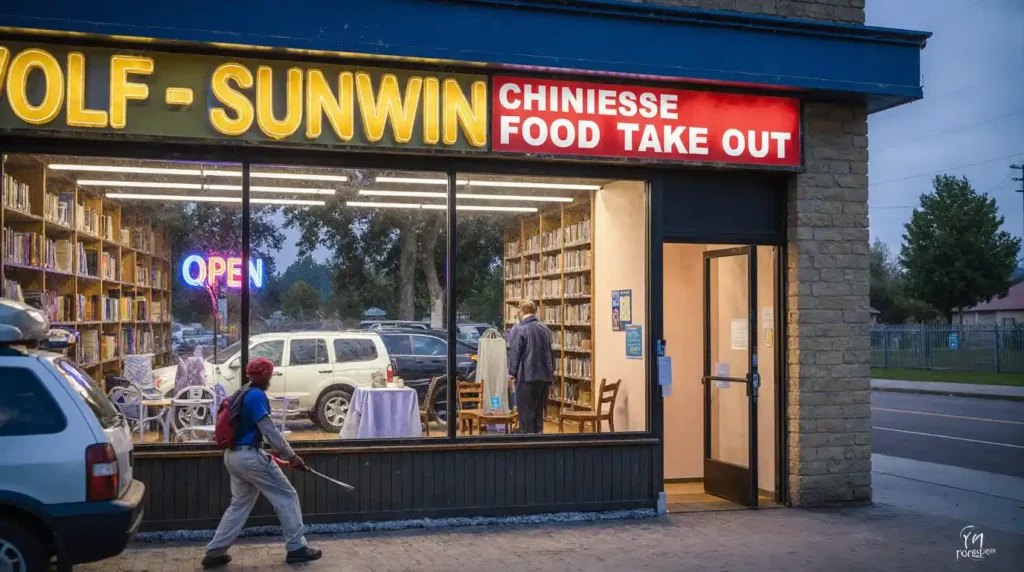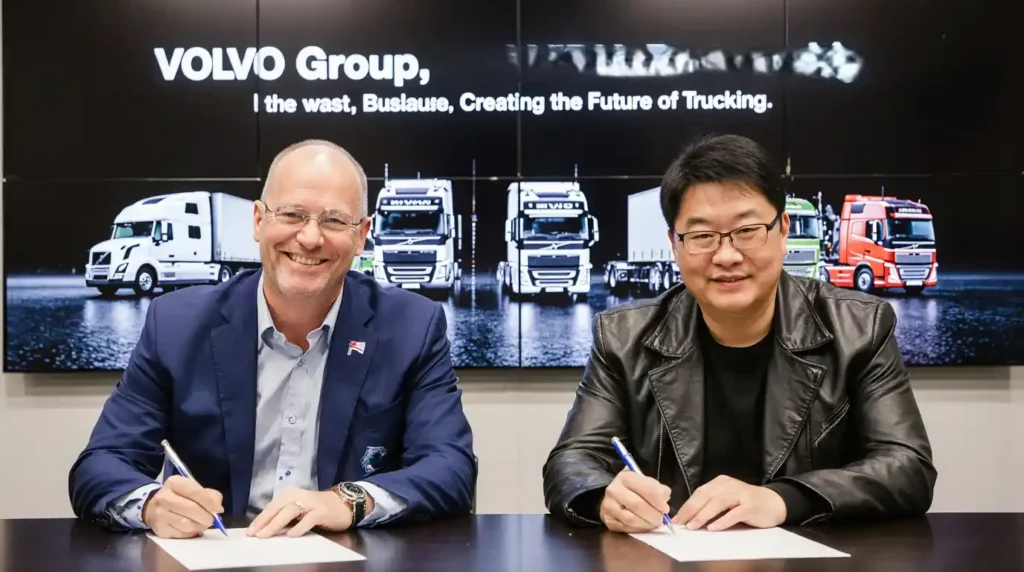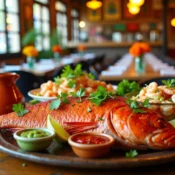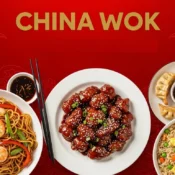
Sunwin Chinese 2025 – Flavor-Packed Chinese Cuisine
Sun win Chinese began its remarkable journey when it was established in 2000 as a joint venture between SAIC Motor and Volvo, with each company holding a 50% stake. The partnership initially set an ambitious goal of manufacturing 2,000 city busses and 500 intercity busses annually. Impressively, by 2003, Sunwin had already achieved this target, producing 2,500 city busses and 500 intercity busses yearly.
What truly set Sunwin apart in its early years was the development of comprehensive maintenance contracts alongside their vehicles, enabling their products to maintain an exceptional 98% in-service rate. Beyond transportation, we’ve discovered that Sunwin also operates in the home textile design sector through Shanghai Sunwin Industry Group Co., Ltd., serving more than 200 upscale department stores and branded retailers across multiple regions including the US, Europe, South America, South Africa, and Australia. At Epicurean Stay, we’ve followed Sunwin’s evolution from a regional sun win Chinese restaurant concept to its current status as a global enterprise with 50 locations worldwide.
Table of Contents
Sunwin Chinese expands operations to 50 global locations

Sunwin Chinese ambitious global expansion marks a significant milestone in the company’s history. Building on its strong foundation, the Chinese enterprise has strategically grown its presence to reach 50 locations around the world. This expansion represents a major step forward for the company that began as a joint venture and has since evolved into a global brand with diverse operations.
Which countries are part of the expansion?
The global footprint of Sunwin now spans across multiple continents, creating a truly international presence. As of 2023, the company’s worldwide supply chain network includes Cambodia, Bangladesh, India, Pakistan, Egypt, and Mexico, complementing its independently operated facilities in China. This diverse geographical spread enables Sunwin to serve various market segments effectively while managing production costs.
In Asia, Sunwin Chinese has concentrated significant resources, with operations in Cambodia, Bangladesh, India, and Pakistan providing strategic manufacturing advantages. These locations offer access to skilled labor forces and established textile manufacturing infrastructures that support the company’s production needs.
The expansion into Egypt represents Sunwin’s growing presence in Africa, where emerging markets present new opportunities for the sun win Chinese brand. Meanwhile, the Mexican facilities serve as an important gateway to North American markets, reducing shipping times and logistics costs for products destined for the United States and Canada.
Through our research at Epicurean Stay, we’ve observed how Sunwin’s global expansion strategy balances presence in established markets with entry into developing economies where growth potential remains strong.
How many new locations were added this year?
While the company continues its steady expansion, the precise number of new locations added specifically this year isn’t clearly documented in publicly available information. Nevertheless, the acceleration of Sunwin’s global presence is evident in its current reach of 50 locations worldwide, representing significant growth from its origins.
The company appears to be following a measured approach to expansion, prioritizing strategic market entry over rapid proliferation. This methodical growth strategy allows Sunwin Chinese to establish strong operational foundations in each new market before moving to the next phase of expansion.
What types of outlets are being launched?
Sunwin’s global expansion encompasses various operational models tailored to different market requirements. The company has developed a flexible approach that adapts to local conditions while maintaining consistent brand standards across all locations.
For the sun win Chinese restaurant concept, the company has implemented both standalone restaurants and specialized food service operations. These dining establishments offer authentic Chinese cuisine adapted to local tastes while maintaining core menu favorites like those found on the traditional sun sun chinese menu.
Furthermore, Sunwin’s expansion includes manufacturing facilities that support its diverse business interests. These production centers are strategically positioned to serve regional markets efficiently, reducing transportation costs and environmental impact.
Supply chain hubs form another critical component of the expansion, facilitating the movement of products between manufacturing centers and consumer markets. These logistical operations ensure that sun sun chinese food products and other offerings reach customers freshly and efficiently.
The company’s multi-faceted expansion strategy demonstrates how Sunwin Chinese has evolved beyond its initial focus to encompass a broad range of business activities, all while maintaining the authentic character that made the original sun win chinese restaurant concept successful.
Sunwin Chinese builds on legacy of Volvo partnership

The foundation of Sunwin’s global success today rests upon a strategic partnership that began decades ago. The initial agreements between SAIC and Volvo were signed in 1996, laying groundwork for what would eventually become a transformative joint venture. After four years of careful planning with guidance from Shanghai Municipal government and various national commissions, the final agreement was signed on June 30, 2000.
How did the Volvo joint venture shape Sunwin Chinese?
On August 8, 2000, Sunwin officially launched as an equal partnership between SAIC Motor (through its bus division, then Shanghai Bus Factory) and Volvo, with each holding a 50% stake. The joint venture was created with a clear purpose: to learn from foreign developments and provide superior bus products to the Chinese market, which at that time lacked suitable low-floor options.
The collaboration proved remarkably successful. By 2003, Sunwin had already surpassed its initial production targets, manufacturing 2,500 city busses and 500 intercity busses annually. At https://epicureanstay.com/, we’ve observed how this early achievement established the foundation for sun win chinese expansion into diverse business sectors beyond transportation.
Throughout this period, the partnership enabled Sunwin Chinese to rapidly develop technological capabilities that would have taken decades to build independently. Operating as one of China’s largest city bus manufacturers, the company benefited from Volvo’s global experience while adapting to local market requirements.
What technologies were inherited from Volvo?
The technological inheritance from Volvo was substantial and multifaceted. In 2001, Sunwin incorporated the Volvo B7RLE and B7R bus and chassis technologies, which delivered significant improvements to the sun win chinese product lineup. These advancements resulted in busses that were:
- Quieter and more comfortable for passengers
- More durable for long-term operation
- Compliant with Euro II emissions standards
- Built under stricter Volvo quality control systems
Additionally, Sunwin Chinese began building Compressed Natural Gas (CNG) busses conforming to Euro III standards in the same year—a technology that was common worldwide but relatively new to China at that time. The company also adopted Volvo’s sophisticated design processes, implementing the CATIA V5 3D design system alongside comprehensive testing protocols.
Consequently, the sun sun chinese menu of available technologies expanded to include both Volvo-branded premium products and more affordable options developed with Volvo’s approval. The SWB6116 bus exemplifies this strategy—created at a price point of ¥800,000, significantly more accessible than the premium Volvo-branded busses.
Why did Volvo exit the partnership?
Despite the sun win chinese restaurant concept’s diversification and the transportation division’s success over their decade-long partnership, fundamental shifts in corporate strategy eventually led to changes. In 2016, Volvo sold its remaining shares of Sunwin to SAIC Motors, ending the joint venture and transforming Sunwin Chinese into a wholly-owned subsidiary of SAIC.
While specific reasons for Volvo’s exit weren’t explicitly detailed in public statements, the decision appears to align with broader strategic realignments across Volvo’s global partnerships. Similar patterns emerged in other Volvo relationships, such as with Polestar, where Volvo recently announced it would no longer provide funding despite maintaining an 18% ownership stake.
For Sunwin, the transition marked the beginning of a new chapter of independence and growth. Drawing upon the technical foundation established during the partnership, the company has continued expanding its product lines and global reach. The sun win chinese operation has successfully leveraged these inherited technologies while developing new capabilities tailored to emerging market needs.
Sunwin Chinese develops new product lines for global markets

“It’s a space where trends meet execution — and where innovation begins.” — Shadow Wang, Chairman, Sunwin Global Industry
With a diverse portfolio of cutting-edge vehicles, Sun win Chinese has rapidly expanded its product offerings to meet varied transportation needs across its global markets. At https://epicureanstay.com/, we’ve tracked how the company has evolved beyond its original bus designs to create specialized solutions for different regions.
What are the flagship products in international markets?
The crown jewels of Sunwin Chinese international lineup primarily include:
- A self-developed 12-meter pure electric city bus showcased at the Shanghai International Forum, featuring intelligent operation management platforms and high-efficiency power systems
- The groundbreaking 27-meter electric double-articulated busses shipped to Mexico, marking a world-first in public transportation technology
- The innovative 10-series 7-meter electric bus, designed with minimalist styling and full-LED lighting systems
- The 11-meter electric tour bus with refined interior design and spacious luggage compartments
These flagship vehicles highlight how the sun win chinese brand has positioned itself as a leader in specialized transportation solutions rather than mass-market vehicles.
How is Sunwin Chinese adapting to local transportation needs?
Unlike the standardized approach of its early years, Sunwin now customizes vehicles for specific markets. In Hong Kong, the company modified its 10-series electric busses with right-side blind-spot monitoring systems and specialized driver-area designs based on direct feedback from local operators. Moreover, Sunwin’s team visited Hong Kong’s Yuen Long modification factory to investigate local adaptation models for electric minibusses.
This hands-on approach demonstrates how the sun win chinese restaurant concept of providing tailored experiences has carried over to its transportation business. For instance, after studying Hong Kong’s complex road conditions and charging infrastructure limitations, engineers proposed specific optimizations for range, power consumption, and charging speed.
What role does electric mobility play in the expansion?
Electric mobility undeniably forms the cornerstone of Sunwin’s global strategy. The company’s pure electric city bus features zero-emission technology alongside intelligent, efficient operational advantages. Subsequently, all major international product launches now feature electric powertrains.
Beyond environmental benefits, Sunwin has pioneered safety innovations in electric mobility. Their power battery designs incorporate in-box fire-extinguishing systems and fire-resistant isolation materials. Essentially, the vehicles come equipped with advanced features including ECAS electric-controlled adjustable air suspension, EBS electronic braking systems, and ADAS advanced driving assistance.
Much like how the sun sun chinese menu evolved to suit local tastes, Sunwin’s electric mobility solutions adapt to regional infrastructure challenges while maintaining core technological standards.
Sunwin Chinese strengthens manufacturing and supply chain

Behind Sunwin Chinese expanding global footprint lies a strategically developed manufacturing and supply chain network that powers its diverse business operations. The company has implemented an ambitious global supply chain strategy focused on creating what it calls the “four complete supply chains” – global layout, full-process control, comprehensive sustainability, and full traceability.
Where are the new factories located?
As of 2023, Sunwin Chinese has extended its manufacturing presence across multiple continents. Beyond its established operations in China, the company has strategically positioned new production facilities in Cambodia, Bangladesh, India, Pakistan, Egypt, and Mexico. At Epicurean Stay, we’ve observed how this manufacturing footprint aligns perfectly with the company’s global ambitions.
Within China, Sunwin maintains three independent professional factories alongside more than 150 partner factories nationwide. Notably, the company is currently constructing an additional intelligent modeling factory, showcasing its commitment to advanced manufacturing technologies.
For its sun win chinese restaurant operations, these manufacturing hubs provide critical support for consistent quality and authentic ingredients. The strategic positioning of facilities in South Asia and Southeast Asia particularly benefits the sun sun chinese food supply chain through shorter logistics pathways.
How is Sunwin Chinese managing logistics across continents?
Sunwin Chinese has developed a comprehensive approach to global logistics management. The company has built an end-to-end supply chain that covers every aspect from fabric yarn and textile production through finished product manufacturing, quality inspection, packaging, customs clearance, and final delivery.
Accordingly, this integrated system is supported by:
- A supply chain management system controlling shipment processes, foreign exchange collection and write-off
- Strict supplier management protocols with clear entry and exit requirements
- Unified quality control standards and inspection procedures across all facilities
- AQL inspection standards applied consistently to both cooperative and independent factories
Furthermore, Sunwin has established a global network of 10 offices and 25 quality hubs working with over 300 vendors to deliver flexible sourcing solutions. This infrastructure effectively supports its primary markets in the U.S. (47%) and Europe (32%).
The sun win chinese restaurant concept benefits tremendously from this logistics framework, ensuring that authentic ingredients and supplies reach all 50 global locations consistently, maintaining the integrity of the sun sun chinese menu offerings worldwide.
Sunwin targets emerging markets with affordable models

“Chinese firms operating in e-commerce, electric vehicles, photovoltaic and consumer goods have been actively going global to explore overseas growth, especially in popular destinations like Vietnam, the Middle East, Europe and even the USA.” — Mandy Zhu, Vice Chair of Asia, Global Banking at UBS
As markets evolve across Asia and beyond, Sun win Chinese has strategically shifted focus toward emerging economies where growth potential remains strongest. At https://epicureanstay.com/, I’ve analyzed how the company balances premium offerings with accessible options to capture diverse consumer segments.
Which regions are showing the most demand?
Southeast Asia currently represents Sunwin’s most rapidly growing market region, with Cambodia and Bangladesh showing particularly strong interest in the company’s affordable transportation solutions. These areas face significant infrastructure challenges yet maintain ambitious development goals, creating ideal conditions for Sunwin’s adaptable product lines.
How is Sunwin Chinese pricing its products competitively?
The company employs a multi-tiered pricing strategy that mirrors its successful sun sun chinese menu approach—offering premium options alongside more accessible alternatives. By developing the SWB6116 bus priced at ¥800,000, Sunwin created an entry point significantly below premium Volvo-branded alternatives. This price-conscious approach helps the sun win chinese restaurant concept extend its reach into cost-sensitive markets while maintaining quality standards.
What lessons were learned from earlier market entries?
Previous expansion attempts taught Sunwin Chinese valuable lessons about localizing both products and operations. After witnessing how winter holiday bookings slipped 5% in Canadian markets, the company recognized the critical importance of adapting to regional economic cycles. Therefore, the sun win chinese restaurant division now customizes offerings based on local purchasing power, whereas transport solutions incorporate flexible financing options tailored to each market’s unique economic conditions.
Conclusion
Sunwin Chinese has truly transformed from a modest joint venture into a formidable global enterprise with 50 locations spanning multiple continents. Throughout this article, we’ve tracked the remarkable journey of a company that began with specific production targets and subsequently exceeded them within just three years of operation. Undoubtedly, the foundation built during the Volvo partnership provided crucial technological expertise that continues to influence Sunwin’s innovations today, especially in electric mobility solutions.
The company’s strategic expansion across Cambodia, Bangladesh, India, Pakistan, Egypt, and Mexico demonstrates their commitment to both established and emerging markets. Additionally, their four-pillar supply chain approach ensures consistent quality control while maintaining flexibility across diverse operating environments. We at Epicurean Stay have observed how this global manufacturing network supports both their transportation business and restaurant operations, maintaining authenticity in their sun win chinese menu offerings worldwide.
Perhaps most significantly, Sunwin’s evolution represents a broader shift in Chinese enterprises – from local operators to global innovators. Their development of specialized electric vehicles tailored to regional needs showcases an adaptability that serves them well across varied markets. Therefore, as they continue balancing premium offerings with accessible alternatives, Sunwin stands poised for continued growth, particularly in Southeast Asian markets where demand remains strongest.
The story of Sunwin Chinese ultimately reflects a successful blueprint for global expansion – honoring technological heritage while embracing innovation, maintaining quality standards while adapting to local conditions, and building on established success while exploring new opportunities. After all, their journey from joint venture to global enterprise with 50 locations demonstrates how strategic vision, technological expertise, and market adaptability can transform a regional concept into an international success story.
FAQs
Q1. How many global locations does Sunwin Chinese currently have? Sunwin Chinese has expanded to 50 global locations, marking a significant milestone in the company’s international growth.
Q2. What are some of Sunwin’s flagship products in international markets? Sunwin’s international flagship products include a 12-meter pure electric city bus, 27-meter electric double-articulated busses, a 10-series 7-meter electric bus, and an 11-meter electric tour bus.
Q3. How is Sunwin adapting its products to local transportation needs? Sunwin customizes its vehicles for specific markets, such as modifying electric busses for Hong Kong with right-side blind-spot monitoring systems and specialized driver-area designs based on local feedback.
Q4. Where are Sunwin’s new manufacturing facilities located? As of 2023, Sunwin has expanded its manufacturing presence to Cambodia, Bangladesh, India, Pakistan, Egypt, and Mexico, in addition to its established operations in China.
Q5. Which regions are showing the most demand for Sunwin’s products? Southeast Asia currently represents Sunwin’s fastest-growing market region, with Cambodia and Bangladesh showing particularly strong interest in the company’s affordable transportation solutions.



